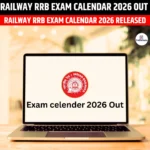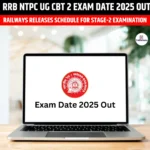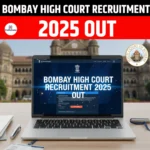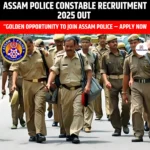
What’s in this Article?
- Table of Contents
- Why in the News?
- “Bharat Ratna” Awardee- 2024
- About “Bharat Ratna” Award
- List of Recipients of “Bharat Ratna” (1954-2024)
- Miscellaneous Facts About “Bharat Ratna”
- Conclusion
- FAQs
- MCQs
Why in the News?
- Recently, the President of India announced that the veteran BJP leader L K Advani, socialist leader and former Chief Minister of Bihar Karpoori Thakur, former Prime Ministers PV Narasimha Rao and Chaudhary Charan Singh, alongside agricultural scientist MS Swaminathan, will be conferred the Bharat Ratna.
“Bharat Ratna” Awardee- 2024
- Bharat Ratna To Karpoori Thakur (Posthumous)
-
- Renowned socialist leader and former Chief Minister of Bihar, fondly known as ‘Jan Nayak’ (people’s leader) who served as the 11th Chief Minister of Bihar twice, from 1970-71 and 1977-79.
- Honoured for significant contributions to politics and governance in Bihar.
- Bharat Ratna To Lal Krishna Advani
- Lal Krishna Advani is an Indian politician, who served as the 7th Deputy Prime Minister of India from 2002 to 2004.
- He was one of the co-founders of Bharatiya Janata Party (BJP) and served as the president of the party three times.
- Bharat Ratna To Pamulaparthi Venkata Narasimha Rao (Posthumous)
- PV Narasimha Rao was an Indian lawyer, politician and statesman who served as the 9th prime minister of India from 1991 to 1996 (first PM from the South of India).
- He, along with the then Finance Minister Dr Manmohan Singh, initiated economic reforms agenda primarily focused on ‘Liberalisation, Privatisation, Globalisation‘, often referred to as LPG.
- Bharat Ratna To Chaudhary Charan Singh (Posthumous)
- Chaudhary Charan Singh was an Indian politician and a freedom fighter who served as the 5th prime minister of India and 5th Chief Minister of Uttar Pradesh.
- Charan Singh is credited for inventing and executing the well-known Zamindari Abolition Act and initiated the Land Holding Act 1960.
- He followed Mahatma Gandhi in non-violent struggle for independence from the British Government, and was imprisoned several times.
- Bharat Ratna To Mankombu Sambasivan Swaminathan (Posthumous)
- MS Swaminathan was an agronomist, agricultural scientist, plant geneticist, administrator, and humanitarian, who is widely known as the ‘father of the Green Revolution’ in India.
- He has been called the main architect of the green revolution in India for his leadership and role in introducing and further developing high-yielding varieties of wheat and rice and played a pivotal role in helping India achieve self-reliance in agriculture.
About “Bharat Ratna” Award
- About: “Bharat Ratna” is the highest civilian award of the Republic of India.
- Establishment: Instituted on 2 January 1954, the award is conferred in recognition of “exceptional service/performance of the highest order” without distinction of race, occupation, position, or sex.
- The first recipients of the Bharat Ratna were C. Rajagopalachari, Sarvepalli Radhakrishnan, and C. V. Raman, honoured in 1954.
- Criteria for Award: Initially, the award was restricted to achievements in the arts, literature, science, and public services.
- However, the Government, in 2011, expanded the criteria to include “any field of human endeavour”.
- There is no written provision to award Bharat Ratna to only Indian citizens.
- Previously, the award was not conferred posthumously.
- This criterion was changed in 1966.
- Selection Process:
- Recommendation: Nominations for the Bharat Ratna can be made by the Prime Minister, the President, or any citizen.
- Screening Committee: A committee reviews the nominations and recommends candidates to the Prime Minister.
- Final Decision: The Prime Minister makes the final recommendation to the President for approval.
- Note: It is not mandatory that Bharat Ratna be awarded every year.
- Award Constituents:
- Medal and Certificate: On conferment of the award, the recipient receives a Sanad (certificate) signed by the President and a medallion.
- Note: The Award does not carry any monetary grant.
- Privileges: The award confers no formal title but grants the recipient certain privileges, including a stipend and free travel on Indian Airlines.
List of Recipients of “Bharat Ratna” (1954-2024)
| S.No | Recipient’s Name | Contributing Field | Year of Award |
| 1. | Dr Sarvapalli Radhakrishnan | Literature | 1954 |
| 2. | Sir C V Raman | Science | |
| 3. | C Rajagopalachari | Public Service | |
| 4. | Sir M Vivesvaraya | Science | 1955 |
| 5. | Dr Bhagwan Das | Education | |
| 6. | Jawaharlal Nehru | Public Service | |
| 7. | Pandit Govind Ballabh Pant | Public Service | 1957 |
| 8. | Dr Dhonde Keshav Karve | Education | 1958 |
| 9. | Purushottam Das Tandon | Public Service | 1961 |
| 10. | Dr Bidhan Chandra Roy | Education/ Public Service | |
| 11. | Dr Rajendra Prasad | Public Service | 1962 |
| 12. | Dr Panduran Vaman Kane | Literature | 1963 |
| 13. | Dr Zakir Hussain | Public Service | |
| 14. | Lal Bahadur Shastri | Public Service | 1966 |
| 15. | Indira Gandhi | Public Service | 1971 |
| 16. | V V Giri | Public Service | 1975 |
| 17. | K Kamaraj | Public Service | 1976 |
| 18. | Mother Teresa | Public Service | 1980 |
| 19. | Acharya Vinoba Bhave | Public Service | 1983 |
| 20. | Khan Abdul Ghaffar Khan | Public Service | 1987 |
| 21. | M G Ramachandran | Arts/ Public Service | 1988 |
| 22. | Nelson Mandela | Public Service | 1990 |
| 23. | Dr B R Ambedkar | Public Service | |
| 24. | Sardar Vallabhbhai Patel | Public Service | 1991 |
| 25. | Morarji Desai | Public Service | |
| 26. | Rajiv Gandhi | Public Service | |
| 27. | Satyajit Ray | Arts | 1992 |
| 28. | Jehangir Ratanji Dadabhai Tata | Education/Business | |
| 29. | Maulana Abul Kalam Azad | Public Service/Education | |
| 30. | Dr APJ Abdul Kalam | Science | 1997 |
| 31. | Gulzari Lal Nanda | Public Service | |
| 32. | Aruna Asaf Ali | Public Service | |
| 33. | M S Subbulakshmi | Arts | 1998 |
| 34. | Chidambaram Subramaniam | Public Service | |
| 35. | Pandit Ravi Shankar | Arts | 1999 |
| 36. | Jayprakash Narayan | Public Service | |
| 37. | Gopinath Bordoloi | Public Service | |
| 38. | Prof Amartya Sen | Science | |
| 39. | Ustad Bismillah Khan | Arts | 2001 |
| 40. | Lata Mangeshkar | Arts | |
| 41. | Pandit Bhimsen Joshi | Arts | 2008 |
| 42. | Prof CNR Rao | Science | 2014 |
| 43. | Sachin Tendulkar | Sports | |
| 44. | Atal Bihari Vajpayee | Public Service | 2015 |
| 45. | Madan Mohan Malviya | Education | |
| 46. | Pranab Mukherjee | Public Service | 2019 |
| 47. | Nanaji Deshmukh | Education | |
| 48. | Bhupen Hazarika | Arts | |
| 49. | Karpoori Thakur | Public Service | 2024 |
| 50. | Lal Krishna Advani | Public Service | |
| 51. | P V Narasimha Rao | Public Service | |
| 52. | Chaudhary Charan Singh | Public Service | |
| 53. | Dr M S Swaminathan | Agriculture Science |
Miscellaneous Facts About “Bharat Ratna”
- The award was started by the former President of India Rajendra Prasad on 2nd January 1954.
- Indira Gandhi was the first woman Bharat Ratna recipient.
- Sachin Tendulkar is the youngest Bharat Ratna recipient.
- The initial award was a circular gold medal with a sun on the obverse side (35 mm in diameter).
- Above the flower, a wreath was engraved “Bharat Ratna” in Devanagari script.
- The National Emblem of India, fashioned of platinum, with the National Motto, ‘Satyameva Jayate,’ written in Devanagari script on the other side.
- Production: The Alipore Mint in Kolkata produces the Bharat Ratna medals, as well as other renowned prizes such as the Padma Vibushan, Padma Bhushan, Padma Shri, and Param Veer Chakra.
- The number of annual “Bharat Ratna” awards is restricted to a maximum of three in a particular year.
- However, the five Bharat Ratna awards given in 2024 marks the highest number of Bharat Ratna awarded in a single year, surpassing the four awarded in 1999.
- In terms of Article 18 (1) of the Constitution, the award cannot be used as a prefix or suffix to the recipient’s name.
- However, should an award winner consider it necessary, he/she may use the following expression in their biodata/letterhead/visiting card etc. to indicate that he/she is a recipient of the award:
i. ‘Awarded Bharat Ratna by the President’ or
ii. ‘Recipient of Bharat Ratna Award’ - Foreign Recipients: Khan Abdul Ghaffar Khan (1987) and Nelson Mandela (1990) are the foreigners awarded with the Bharat Ratna. A naturalised Indian citizen, Mother Teresa was conferred with the award in 1980.
Controversies and Discussions
- Timing of Awards: The timing and choices of Bharat Ratna awardees have occasionally sparked debates and controversies.
- In 1992, the government’s decision to confer Bharat Ratna posthumously on Subhas Chandra Bose met with criticism due to controversy over his death. Following a 1997 Supreme Court decision, the award was cancelled.
- This was the first and to date the only occasion when the award was announced but withdrawn.
Conclusion:
- The Bharat Ratna is awarded “in appreciation of outstanding service/performance of the highest level,” regardless of race, occupation, status, or sex.
- The Bharat Ratna stands as a prestigious recognition of exceptional service and contributions to India, encompassing a wide range of fields.
- Despite occasional debates, it continues to symbolize the nation’s gratitude to those who have made outstanding contributions to humanity.
- The Bharat Ratna celebrates the achievements of individuals from all walks of life.
- The awardee also gets Bharat Ratna tax benefits and various other privileges.
Frequently Asked Questions (FAQ’s)
Question: What are the criteria for getting Bharat Ratna?
Ans: The Bharat Ratna is awarded “in appreciation of outstanding service/performance of the highest level,” regardless of race, occupation, status, or sex. According to the 1954 rules, the prize was limited to the arts, literature, science, and public service. The regulations were revised in December 2011 to encompass “any sphere of human endeavour.”
Question: Who received the first Bharat Ratna award?
Ans: The first Bharat Ratna award was awarded to politician C. Rajagopalachari, philosopher Sarvepalli Radhakrishnan, and scientist CV Raman in the year 1954.
Question: Who refused Bharat Ratna?
Ans: The Bharat Ratna Award was denied by Maulana Abul Kalam Azad. He was India’s first education minister and a key figure in the country’s independence fight. He received the prize posthumously in 1992.
Question: In which year was the highest number of Bharat Ratna awards given?
Ans: The five Bharat Ratna awards given in 2024 marks the highest number of Bharat Ratna awarded in a single year, surpassing the four awarded in 1999. Karpoori Thakur, Lal Krishna Advani, P V Narasimha Rao, Chaudhary Charan Singh and Dr M S Swaminathan have been awarded the Bharat Ratna in 2024.
Question: Who is the first woman Bharat Ratna award?
Ans: As India’s first female prime minister, Indira Gandhi was awarded the Bharat Ratna in 1971.
Question: Who is the youngest Bharat Ratna Recipient?
Ans: Cricketer Sachin Tendulkar is the youngest (and only sportsman) recipient of the Bharat Ratna Award.
Question: Which is the 4 highest civilian award in India?
Ans: Bharat Ratna (1st), Padma Vibhushan (2nd), Padma Bhushan (3rd) and Padma Shri are the 4 highest civilian awards in India which are given to anyone for exceptional work in their field.
Question: In which areas “Bharat Ratna” is awarded?
Ans: Bharat Ratna is awarded in recognition of exceptional work/service of the highest order in any field of human endeavour as; art, social work, Public Affairs, Science & Engineering, Sports and Trade & Industry, etc. It is worth mentioning that no formal recommendations for Bharat Ratna are necessary. The recommendations for Bharat Ratna are made by the Prime Minister to the President of India.
MCQ’s
Question: Consider the following–
- Bharat Ratna awardees are given a peepal leaf-shaped medal and a certificate
- President chooses not more than three people as the Bharat Ratna awardees in a particular year.
- ₹10 lakh each is given to Bharat Ratna Awardees.
Which of the above is/are correct?
a) 1 only
b) 1 and 3 only
c) 1 and 2 only
d) 1, 2 and 3
Ans: c (1 and 2 only)
- Explanation:
Bharat Ratna - The Bharat Ratna is India’s highest civilian honour, established in 1954.
- It is given in honour of remarkable service in any sphere of human endeavour, regardless of race, career, status, or sex.
- On the Prime Minister’s suggestion to the President of India, a maximum of three Bharat Ratna awards can be presented each year.
- The recipient of the award receives a Sanad (certificate) signed by the President as well as a medallion. The prize does not come with a monetary grant.
- The awardees are not allowed to use Bharat Ratna as a prefix or suffix to their names, as stated in Article 18(1) of the Indian Constitution.
- There is no formal requirement that the Bharat Ratna be granted solely to Indian nationals.
- This prestigious prize was given to a naturalized Indian citizen, Agnes Gonxha Bojaxhiu, popularly known as Mother Teresa (1980), as well as non-Indians, Khan Abdul Ghaffar Khan (1987) and Nelson Mandela (1990).
- Therefore, option (c) is the correct answer.
Question: Which of the following statements regarding the Bharat Ratna, India’s highest civilian award, is/are correct?
- The Bharat Ratna was first instituted in 1954 and awarded to C. Rajagopalachari, C.V. Raman, and Sarvepalli Radhakrishnan.
- The award can only be conferred during a person’s lifetime.
- Recipients of the Bharat Ratna receive a formal title, along with a medal, certificate, and a cash award.
- The selection process involves recommendations by the President of India, and the final decision is made by a screening committee.
Select the correct answer using the code below:
a) 1 only
b) 1 and 2 only
c) 1 and 3 only
d) 1, 2, and 4 only
Ans: a (1 only)
- Explanation:
- The Bharat Ratna was indeed instituted in 1954, and the first recipients were C. Rajagopalachari, C.V. Raman, and Sarvepalli Radhakrishnan: (1- Correct)
- The award can be conferred both during an individual’s lifetime and posthumously, honoring their contributions regardless of their survival: (2- Incorrect)
- The Bharat Ratna does not confer a formal title upon recipients. They receive a medal, certificate, and a cash award: (3- Incorrect)
- The selection process involves recommendations by the Prime Minister, not the President. The final decision is made by the Prime Minister, and the President approves the recommendation: (4- Incorrect)
- Therefore, option A is the correct answer as only statement 1 is accurate.
Question: Consider the following statements in respect of Bharat Ratna and Padma Awards: (2021)
- Bharat Ratna and Padma Awards are titles under the Article 18(1) of the Constitution of India.
- Padma Awards, which were instituted in the year 1954, were suspended only once.
- The number of Bharat Ratna Awards is restricted to a maximum of five in a particular year.
Which of the above statements are not correct?
a) 1 and 2 only
b) 2 and 3 only
c) 1 and 3 only
d) 1, 2 and 3
Ans: d (1, 2 and 3)
Disclaimer: The article may contain information pertaining to prior academic years; for further information, visit the exam’s “official or concerned website“.
























